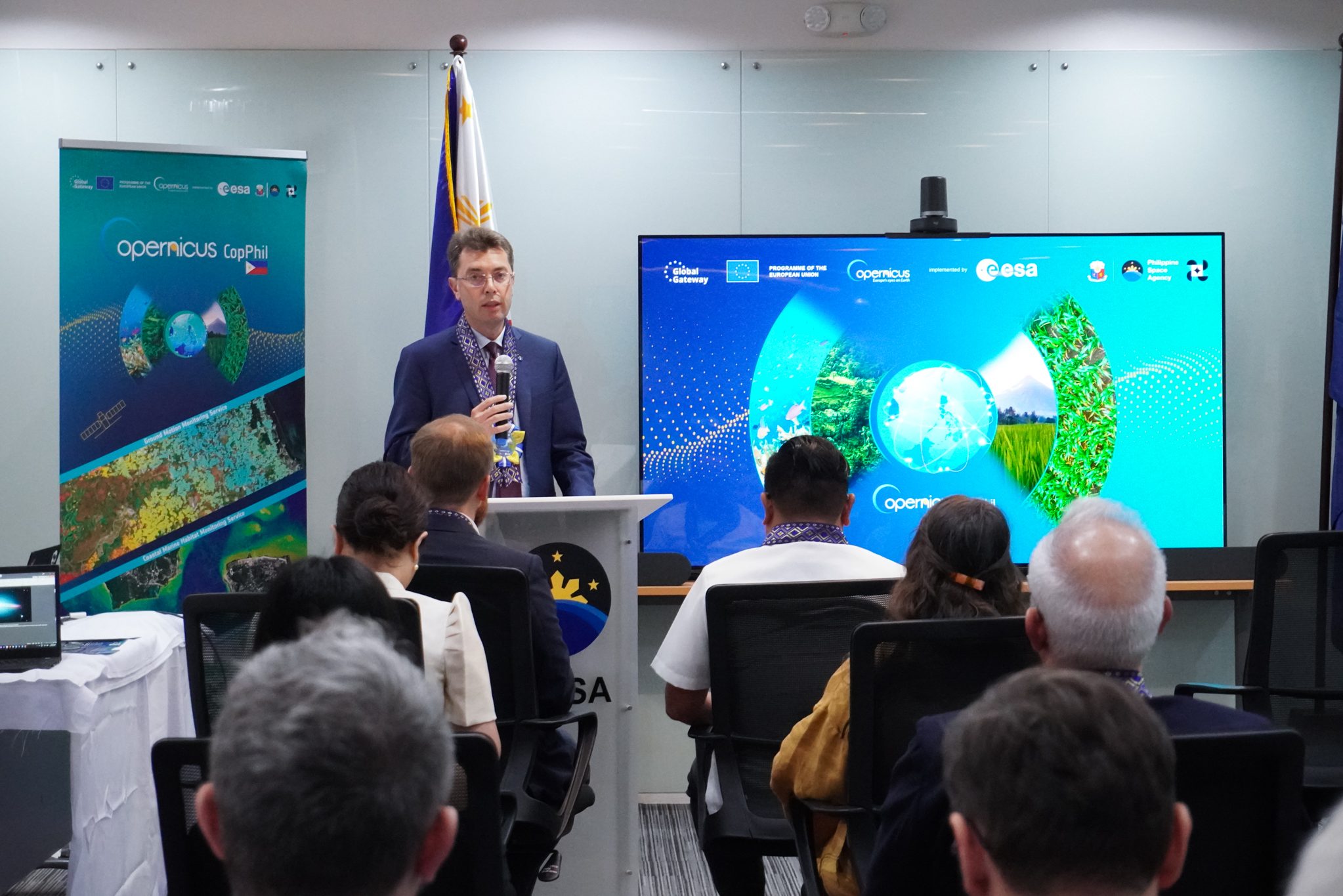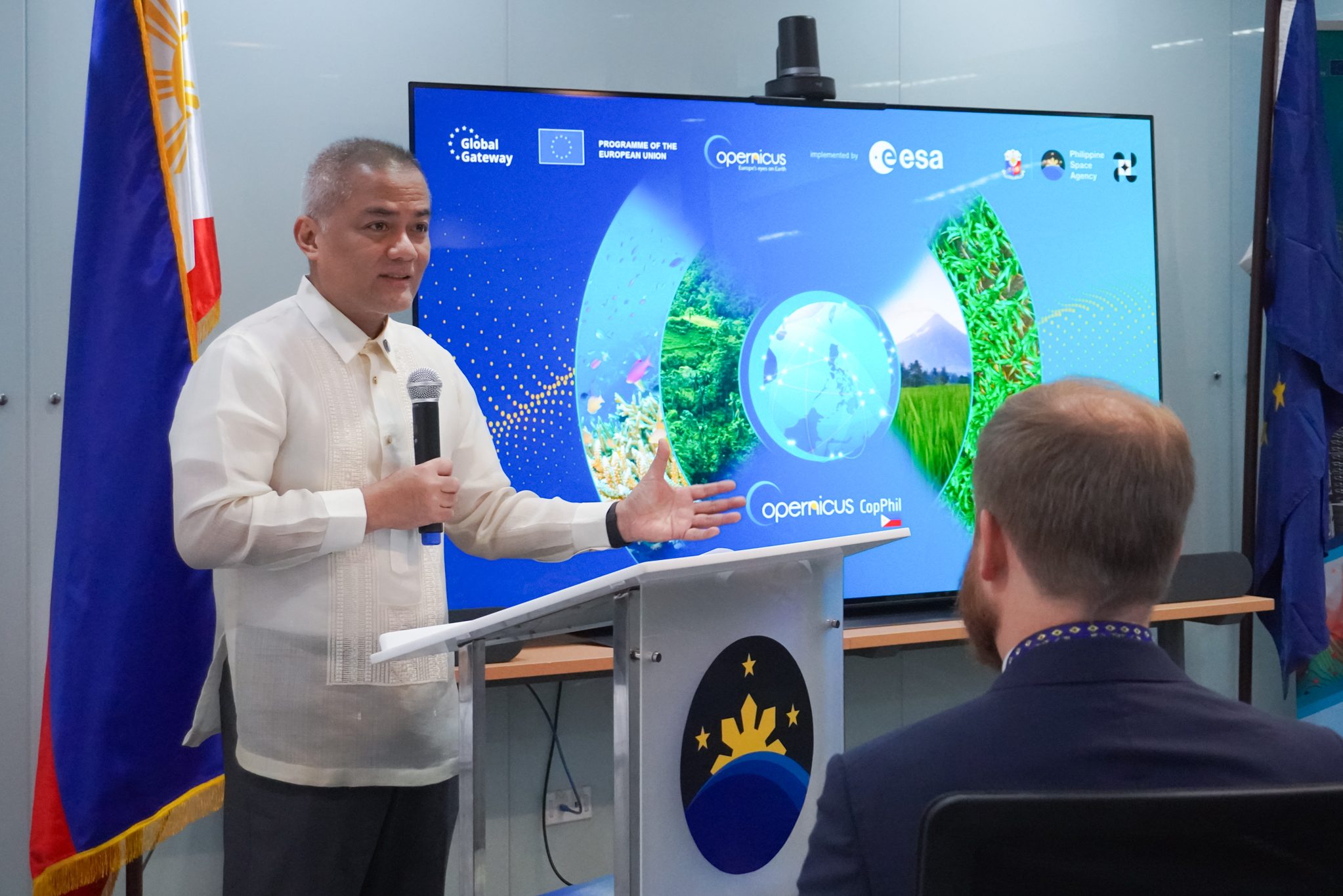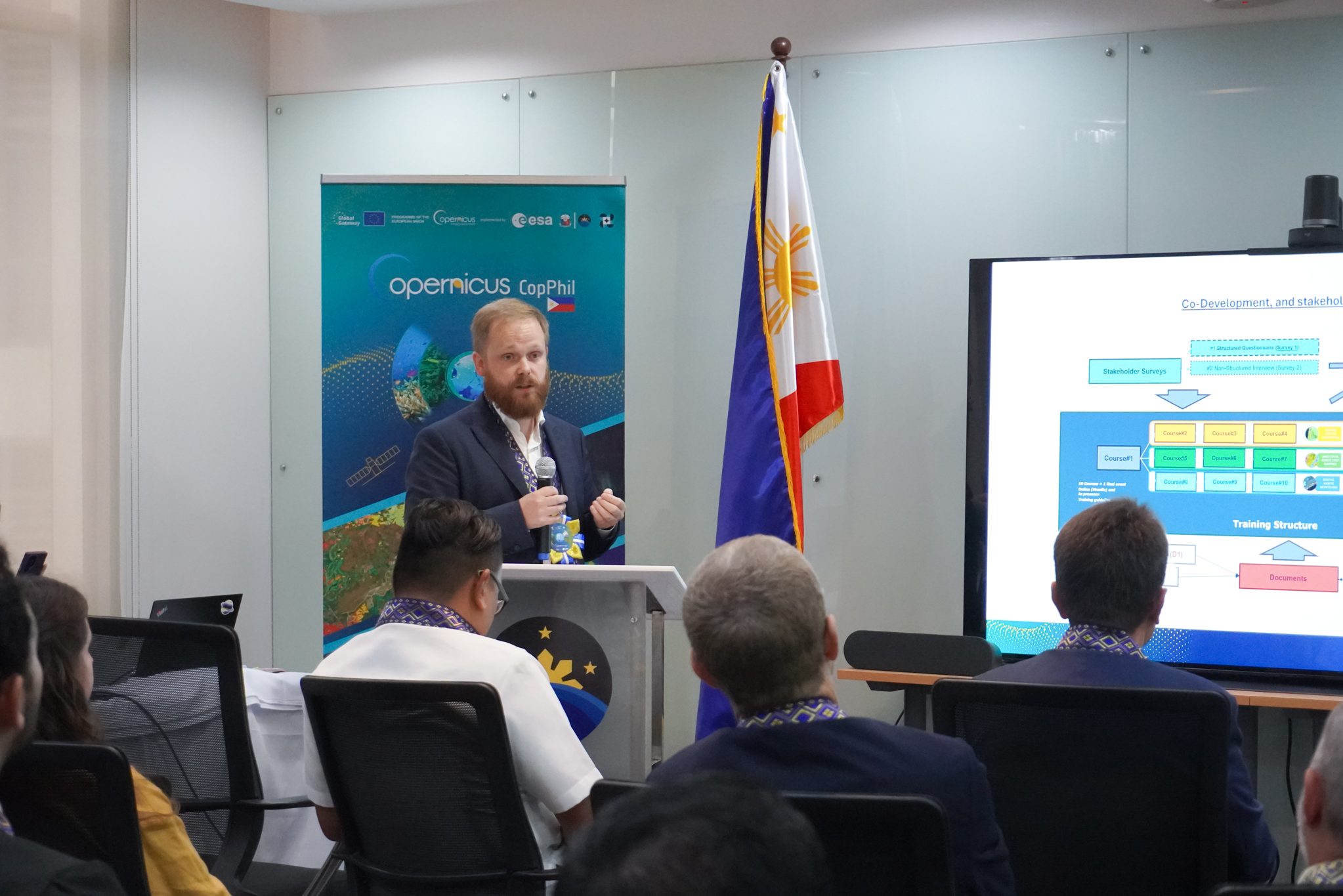The European Union (EU), the European Space Agency (ESA), the Philippine Space Agency (PhilSA), and the Philippine Department of Science and Technology (DOST) celebrated an important EU Global Gateway milestone yesterday—the unveiling of the Copernicus Data Centre. This project will be the first Copernicus Earth observation data storing and processing facility in Asia and is part of the National Copernicus Capacity Support Action Programme for the Philippines (CopPhil).
The partners came together at the PhilSA headquarters in Quezon City, Metro Manila, for a “First Light” ceremony, referring to the first moment the Copernicus Data Centre captures the Earth observation images of the Philippines through European satellites.
The Philippine Space Agency Director General Dr. Joel Joseph Marciano, Jr. highlighted how CopPhil and the data centre, “boosts the domestic space value chain and ecosystem, particularly by enhancing access, infrastructure, and the capacity for generating value-added, impactful products and services from space data in the country and the larger region.”
The Department of Science and Technology Secretary Renato U. Solidum, Jr., underlines that the science agency is unwavering in its support for the CopPhil programme, leveraging its extensive expertise in Digital Connectivity, Computing, and Remote Sensing Applications. “DOST is committed to sharing knowledge and data to foster collaboration across sectors, ensuring that scientific advancements benefit all stakeholders. This dedication not only enhances the programme’s effectiveness but also reinforces DOST’s role as a leader in driving innovation for national development”, he said.
Being the first country in Asia with this singular data centre, hosted locally by PhilSA, positions the Philippines as a central hub for Earth observation in South-East Asia. “The EU-Philippines quality partnership is about harnessing modern infrastructure and space technology for sustainable development”, which—as mentioned by Massimo Santoro, Ambassador of the European Union to the Philippines—“is at the heart of the EU’s Global Gateway strategy. This makes the Philippines one of the most important and pioneering partners for the EU in Earth observation and space cooperation. “
The currently operational data centre starts with pilot services tailored to the Philippine environment and the needs of local authorities. The pilot services range from land cover mapping to ground movement and marine environment monitoring. During the event, the European Space Agency shed light on a special pilot service on ground movement, explaining how the Copernicus satellites—Sentinels—produce information on when and how hazards such as landslides, ground subsidence, volcanic activity or earthquakes occur to prepare for evacuation and reduce damages.
Copernicus services can support both public authorities in designing policies or responding to calamities, as well as the private sector in applications such as sustainable tourism or smart agriculture. There is potential to expand the use Copernicus data set up and lessons learnt in the Philippines to other countries in the region, offering solutions that benefit the entire ASEAN community.
Discussions on regionalising Copernicus centre and exploring opportunities in the private sector are ongoing at the Fairmont Hotel in Manila on 18 October 2024. Stay tuned for updates.
Background information
Copernicus is the European Union’s Earth observation programme, looking at our planet and its environment to benefit all citizens. It offers information services that draw from satellite and in situ Earth Observation data. Copernicus Services deliver near-real-time data on a global level which can also be used for local and regional needs, to help us better understand our planet and sustainably manage the environment we live in. Images and graphs from Copernicus’ #Sentinel satellites, allow public authorities to better prepare for natural disasters, variations in climate, and environmental changes—like forest cover and ground movement.
Copernicus data also support countries worldwide in their efforts to comply with the targets set in the Paris Agreement’s Nationally Determined Contributions. For more information, visit https://www.copernicus.eu/en.
CopPhil is a flagship programme of the EU Global Gateway Strategy. Global Gateway aims to engage with partners globally around shared priorities such as the transition to a green economy, renewable energy and green hydrogen, education and research, or digital infrastructure.
About CopPhil: The EU Copernicus Philippines programme is funded by the EU with a 10 million euro (624 million PHP), implemented by the Philippine Space Agency and European Space Agency in coordination with the Philippines Department of Science and Technology (DOST). The programme supports the adoption of advanced technology to help local public administration, institutions and companies prevent natural disasters, protect the environment, and manage national resources. The project involves three elements: developing a Copernicus data centre in the Philippines, piloting services showcasing the practical applications of earth observation data (ground motion monitoring; land cover, forests and crop mapping, and marine environment monitoring) and supporting the country to strengthen local capacities and promoting education in the field of Earth observation. Copernicus services have already demonstrated its value to the local authorities, when the satellites were activated from Europe last July to map an oil spill caused by the sinking of MT Terra Nova following the heavy rains and rough waters from super typhoon Carina.
CopPhil is a flagship programme of the European Union Global Gateway Strategy, which aims to engage with partners globally around shared priorities such as the transition to a green economy, education and research, or digital infrastructure. To learn more about the impact of CopPhil on the Philippines and its neighbours, click here.











